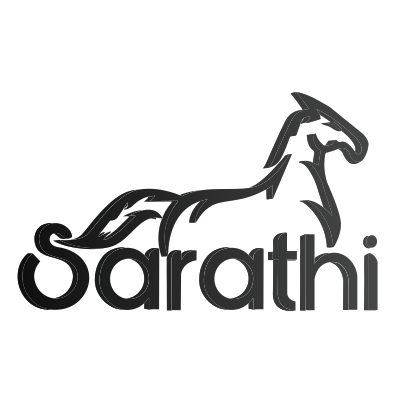1


User Type
Non Interns
Expertise
Job Duration
2024-09-21 - 2024-10-31
Location
India
Experience
0-3
Compilation Days
1
Description
The Sarathi Portal CMS (Content Management System) is a dynamic, user-friendly web platform designed to manage and streamline content for the Sarathi ecosystem. The portal allows administrators, content creators, and users to manage various aspects of job postings, user interactions, and information dissemination efficiently. Here’s a detailed breakdown of its development:
1. Core Features:
Content Management: Easily add, edit, or delete content, including job listings, descriptions, and instructions. Admins can manage users and employment types.
Job Listing Module: A comprehensive module to post and manage job vacancies, along with filtering options such as job status (approved, pending), bid price, salary range, and employment type.
Dynamic Job Application Workflow: Users can view job descriptions, apply directly from the portal, and track their application status.
Modular Design: The CMS supports multiple content types like job descriptions, user instructions, and employment types. These can be dynamically edited and displayed across the portal.
Job Instruction
Important Instructions for Developing the Sarathi Portal
When developing the Sarathi Portal, it is essential to follow a structured approach to ensure the portal is functional, secure, and scalable. Below are key instructions to guide the development process:
1. Requirements Gathering
Understand User Roles: Identify and define all user roles (e.g., Admin, Employers, Job Seekers). Each role will have specific permissions and access to different features.
Core Functionality: Focus on the core requirements such as job listings, applications, bid management, user profiles, and content management.
Content Structure: Define the content types (e.g., job descriptions, user instructions, employment types) and how they will be managed.
2. Technology Stack
Front-End:
Use responsive, mobile-friendly frameworks like Bootstrap or Tailwind CSS for user interface consistency across devices.
Implement AJAX and jQuery for seamless page interactions without refreshing the page (e.g., job status updates, form submissions).
Back-End:
Develop using ASP.NET MVC with C#, ensuring maintainable and modular code.
Use SQL Server for the database to manage job listings, user profiles, applications, and bid data.
APIs: If integrating external services (e.g., third-party job boards), make sure to design and document RESTful APIs.
3. Database Design
Entity Relationships: Design normalized database tables for job details, user profiles, applications, and transaction logs.
Stored Procedures: Use stored procedures for complex data operations (e.g., applying filters to job listings, updating bid statuses) for better performance and security.
Data Validation: Implement strict validation rules in the database to prevent invalid entries (e.g., salary ranges, employment types).
4. Security Best Practices
Role-Based Access Control (RBAC): Ensure users can only access functionality relevant to their role (e.g., job seekers cannot edit job listings).
Input Validation and Sanitization: Sanitize all user inputs to prevent SQL Injection and XSS attacks.
Encryption: Secure sensitive data (e.g., passwords, bid information) using encryption both at rest and in transit.
Session Management: Implement secure session management practices to prevent unauthorized access and session hijacking.
Audit Trails: Keep logs of critical actions such as job postings, bid submissions, and profile updates.
5. Performance Optimization
Pagination and Caching: Implement pagination for job listings and other large data sets. Use caching mechanisms to reduce database load.
Optimize Queries: Ensure database queries are optimized to avoid performance bottlenecks, especially for large datasets (e.g., job listings, applications).
Lazy Loading: Use lazy loading for images and other resources to improve page load times, especially for mobile users.
6. Responsive Design
Ensure the portal is fully mobile-responsive, providing an intuitive experience across all devices, including desktops, tablets, and smartphones.
Test the portal on various screen sizes and browsers for consistency.
7. User Interface (UI) and User Experience (UX)
Easy Navigation: Design a simple, intuitive navigation structure, so users can easily browse job listings, apply for jobs, and manage profiles.
Search & Filtering: Implement advanced search and filtering options for job seekers to find relevant jobs quickly.
Notifications: Provide real-time alerts and notifications for job postings, application statuses, and bidding updates.
8. Testing & QA
Unit Testing: Ensure thorough unit testing for all back-end logic, especially around user roles and permissions.
UI/UX Testing: Test the portal’s UI and user interactions to identify usability issues. Focus on ease of use for both technical and non-technical users.
Load Testing: Perform load testing to ensure the portal can handle peak traffic and large numbers of simultaneous job listings and applications.
Cross-Browser Testing: Test the portal across multiple browsers (Chrome, Firefox, Safari, Edge) and devices to ensure consistency.
9. SEO & Accessibility
SEO Optimization: Ensure job listings and other content are SEO-friendly by including metadata, structured data, and proper HTML tags.
Accessibility: Make the portal accessible to users with disabilities by following WCAG (Web Content Accessibility Guidelines). Use proper ARIA roles, labels, and keyboard navigation support.
10. Scalability & Future-Proofing
Modular Development: Build the portal in a modular fashion to accommodate future feature enhancements (e.g., integration with external job boards or advanced analytics).
Cloud Readiness: Plan for potential migration to cloud infrastructure for scalability in the future (e.g., using Azure or AWS for hosting).
Version Control: Use Git or other version control systems to manage code versions, ensuring smooth team collaboration and deployment processes.
11. Documentation
Code Documentation: Ensure the code is well-documented for future maintainability, especially complex business logic like job application workflows or bid management.
User Guides: Provide user manuals and documentation for different roles (Admins, Employers, Job Seekers) to ensure they can use the portal efficiently.
API Documentation: If external APIs are used or exposed, ensure proper documentation is provided for easy integration.
By following these instructions, the Sarathi Portal will be robust, secure, user-friendly, and scalable, capable of handling the complex workflows required for job management and bidding processes.


